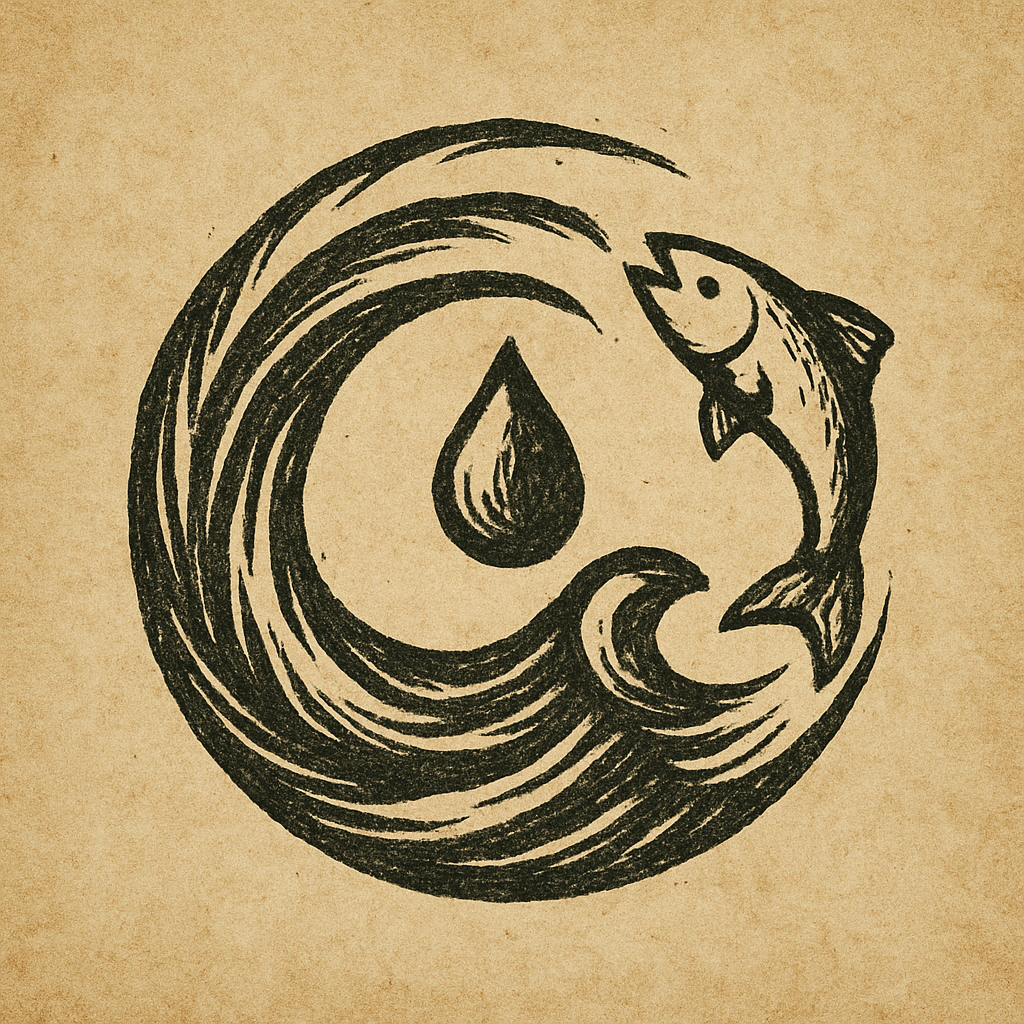Zedast
Goddess of Sea, Rivers, Water, and Rain
Description of the Church
The Church of Zedast, known as The Tidemother’s Embrace, is a flowing, adaptive institution that honors the great waters in all their forms. It is especially revered in coastal cities, riverlands, and island cultures. Its followers speak of Zedast as a tide that nurtures and punishes, both provider and destroyer.
The Church is fluid in structure, much like its god. Worship may involve festivals, meditations by the water, or sacred dives into deep places. Its priests are often sailors, weather-callers, and river-blessers, guiding communities through the rhythms of drought, flood, and storm.
In Frae, the Maharluini worship a different aspect of Zedast, a collective ancestral force bound to the ocean, to rebellion, and the will of the crew over the crown. This church is known as The Church of the Drowned Horizon.
Core Beliefs
- Water is life, but it is also power.
- The sea remembers, and will reclaim what is owed.
- Change is not to be feared, but flowed with.
- Ritual must match rhythm, and force must bow to patience.
- To hoard is to rot, and to flow is to live.
Religious Structure
A flexible, ritual-heavy faith with sea-based hierarchy.
- The Deep Voice – A mystic leader chosen by tide-sign or sea omen.
- Tidebinders – Clergy who bless rains, rivers, wells, and boats.
- Waveseers – Oracles who read tide patterns, storms, and coastal spirits.
- Riverhands – Itinerant priests who travel with the current, blessing and cleansing.
- Pearlborn – Initiates who spend their novitiate submerged, fasting and praying underwater.
Rituals and Practices
- The Tidewalk – A procession along a river or beach to bless crops and weather.
- The Saltfast – Abstention from freshwater to seek purification or insight.
- The Raincall – A sacred song offered during drought.
- The Drowning Wake – A funerary rite for those lost at sea or returned to the waters.
Followers
- Fisherfolk and sailors, bound to water’s mercy.
- Weather-mages, who study water’s moods.
- Priests of flow and movement, guiding physical and spiritual journeys.
- River nomads, who follow Zedast’s currents across the land.
Temples
Temples are built by, into, or under water—floating sanctuaries, coral structures, cliffside sanctums.
Common features:
- The Wavegate, where worshippers bathe before ritual.
- The Sea-Lanterns, hung to call home the drowned.
- The Riverstone Altar, kept wet by sacred stream.
Conflict and Controversy
- Tension with Sevast’s clergy, as sea and sky often clash.
- Opposed by Vohrmazh, who seeks to desiccate flow.
- Celebrated by Deskeylla’s faithful, whose lands are fed by Zedast’s bounty.
- Divided between:
- Harborpriests, who focus on peace and bounty,
- and Tidebreakers, who revere the destructive flood.
Relationships with other gods
Central Architect: Zedast was imagined in the sound of waves and the rhythm of rain—a god of movement, memory, and necessity. He is the force that carves stone through patience, that carries life and drowns it in equal measure. Artists say he was born the first time someone wept over something beautiful or broken. He is what flows—between places, between people, between lives.
Relationship with Deskeylla (nature): Deep partnership. Zedast feeds Deskeylla’s forests and is fed by her roots in turn. Where he flows, she grows. Together, they form the living world’s pulse—one the blood, the other the body. Festivals honoring both often occur in spring rains.
Rivalry with Sevast (sky, lightning): Elemental conflict. Zedast flows; Sevast strikes. Storms arise when their wills clash, with priests of each interpreting the same tempest as different omens. And yet, they depend on each other—no river forms without rain.

Symbol: A spiraling wave with a raindrop at its center and a fish leaping upward against the current.
Meaning: Life through flow, the blessing and wrath of water, perseverance in movement.



Comments